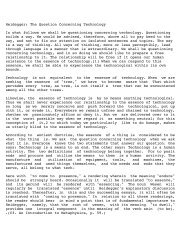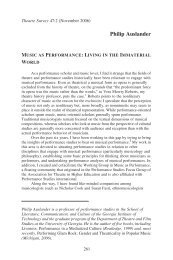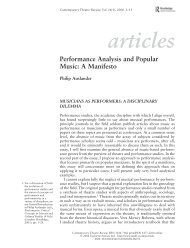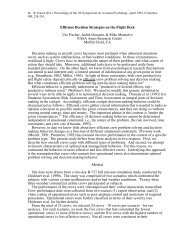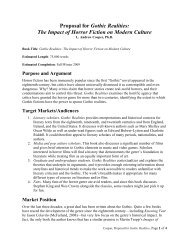INTERACTION DESIGN PRINCIPLES FOR INTERACTIVE ...
INTERACTION DESIGN PRINCIPLES FOR INTERACTIVE ...
INTERACTION DESIGN PRINCIPLES FOR INTERACTIVE ...
You also want an ePaper? Increase the reach of your titles
YUMPU automatically turns print PDFs into web optimized ePapers that Google loves.
that while “MCE 2005 is second to none as a desktop DVR app… poor image quality on<br />
large screens stops us from recommending that you ditch your TiVo” (2004).<br />
Dale Herigstad, who designed the Queer Eye for the Straight Guy prototype for<br />
the 2004 AFI eTV Workshop on this platform, says that he particularly enjoys designing<br />
for the Media Center because “it allows the same data, pictures, movies and other things<br />
you’d find on a Web site to be reconfigured and presented in a more TV-like experience.<br />
So it’s almost like a new medium that’s not the Web but that uses elements of the Web”<br />
(quoted in Swedlow, 2004b).<br />
4.6 CONVERGENT <strong>DESIGN</strong> CONSIDERATIONS <strong>FOR</strong> ITV<br />
As television and the Web continues to converge, Bolter and Grusin observe that<br />
“Convergence is remediation under another name, and the remediation is mutual: the<br />
Internet refashions television even as television refashions the Internet” (1999). However,<br />
the process of remediation exposes the need for new design considerations in this realm.<br />
A service that has been designed for one medium then transferred directly to another,<br />
particularly between two platforms that offer such different affordances, is not likely to<br />
be very successful.<br />
The conflict of conventions encountered during this convergence has social and<br />
psychological roots, as well, as people have different responses to different<br />
communication technologies: “the mere labeling of a technology as a ‘computer’ or a<br />
‘television’ can have very strong effects on users’ perceptions of content, equipment, as<br />
well as their own feelings and memory for content” (Kernal, 1999).<br />
107



